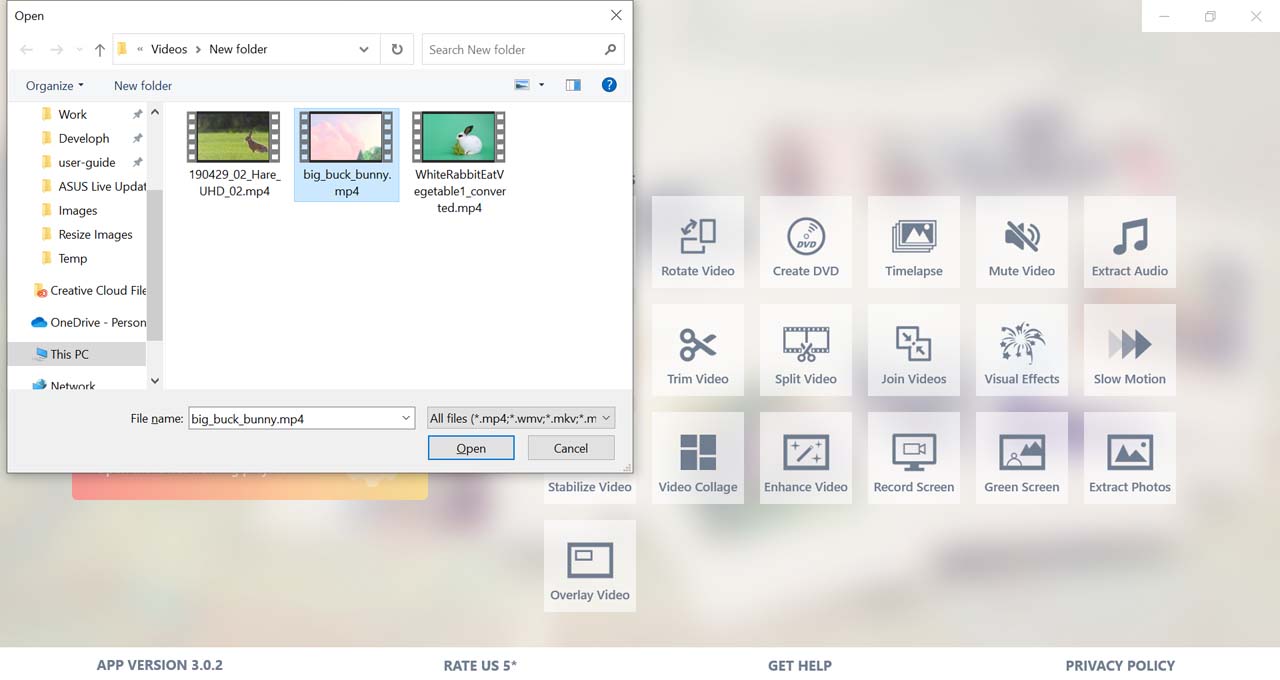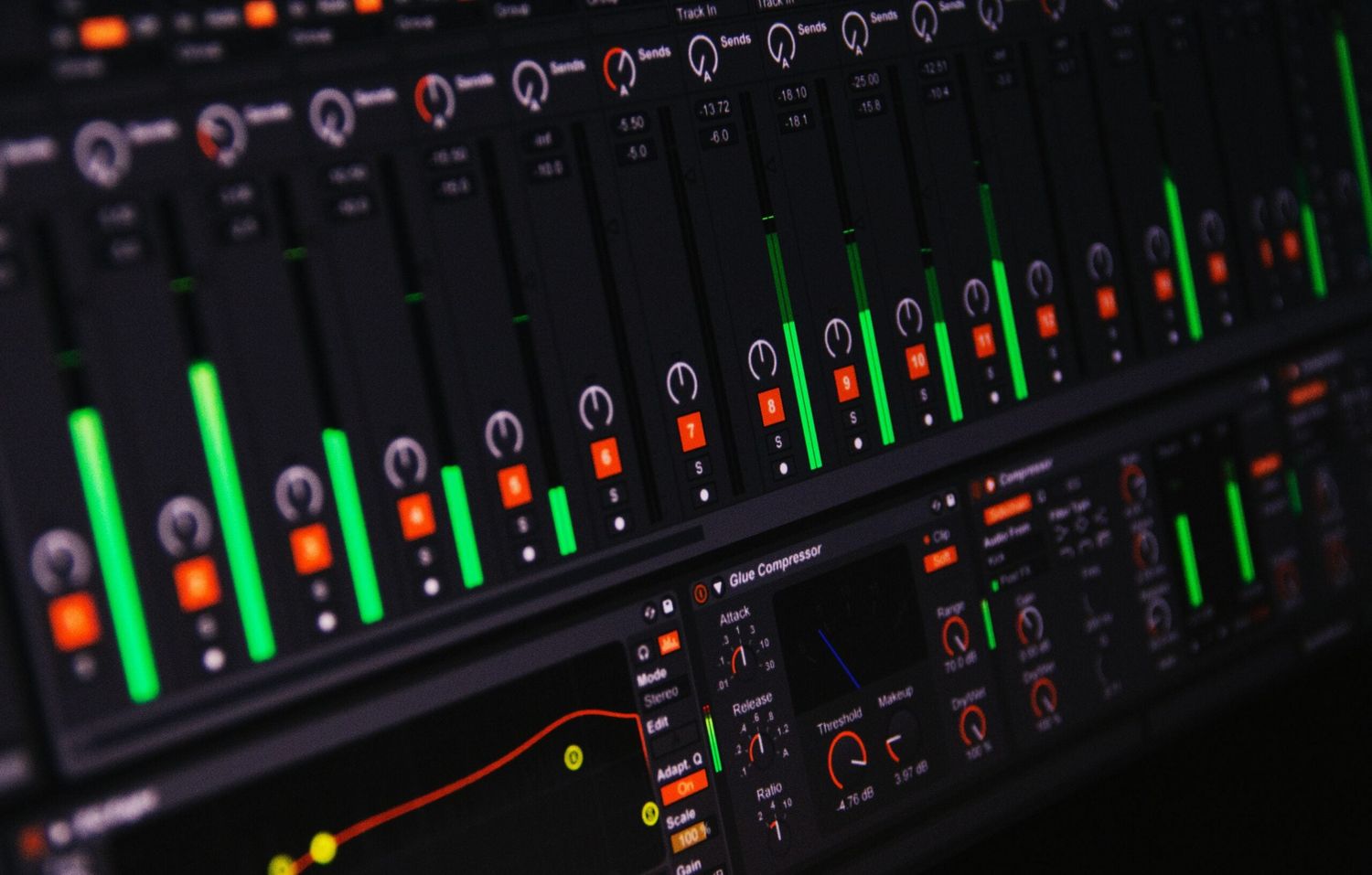Home>Production & Technology>Background Music>How To Create Background Music For A Song


Background Music
How To Create Background Music For A Song
Modified: February 18, 2024
Learn how to create background music for your song with our easy-to-follow guide. Enhance your track with the perfect musical backdrop.
(Many of the links in this article redirect to a specific reviewed product. Your purchase of these products through affiliate links helps to generate commission for AudioLover.com, at no extra cost. Learn more)
Table of Contents
Introduction
Background music plays a crucial role in enhancing the overall experience of a song or a video. It sets the mood, evokes emotions, and adds depth to the storytelling. Whether you are a musician, filmmaker, or content creator, knowing how to create impactful background music can elevate your work to new heights.
In this article, we will explore the various aspects involved in creating background music for a song. From choosing the right instruments to balancing and mixing the tracks, we will cover everything you need to know to create professional-sounding background music.
Before diving into the technical aspects, it’s important to understand the purpose of background music. It acts as a subtle accompaniment, providing a sonic backdrop that enhances the listener’s experience without overpowering the main elements of the song or video.
Background music can serve different purposes depending on the context. It can create a sense of anticipation, add tension or excitement, evoke specific emotions, or simply provide a pleasant and engaging atmosphere. It should complement the main content while adding an extra layer of depth and richness.
When creating background music, it’s important to consider the intended audience and the overall message you want to convey. The music should align with the tone and theme of the song or video. For example, a romantic ballad might require soft and melodic background music, while an action-packed scene might call for more energetic and rhythmic elements.
In the upcoming sections, we will discuss the step-by-step process of creating background music, covering everything from instrument selection to finalizing the tracks. By the end of this article, you will have the knowledge and tools to create captivating and professional background music for your projects.
Choosing the Right Instruments
When it comes to creating background music, choosing the right instruments is crucial in shaping the overall sound and atmosphere. The instruments you select will largely depend on the genre, style, and mood you are aiming for. Here are some factors to consider when choosing instruments for your background music:
- Genre: Different genres have different instrument preferences. For example, a classical piece may feature orchestral instruments like the violin, cello, and piano, while electronic music might make use of synthesizers and drum machines. Consider the genre of your song or video and select instruments that align with its characteristics.
- Tone: The tone of the background music should match the mood you want to convey. If you’re aiming for a light and airy atmosphere, instruments like acoustic guitar, flute, or xylophone can be suitable. On the other hand, if you want to create a darker or more intense feel, instruments like electric guitar, cello, or deep synth bass can be effective.
- Timbre: Pay attention to the unique sound qualities of each instrument. Some instruments have a warm and mellow timbre, while others are bright and percussive. Consider how the timbre of the instrument will blend with the other elements in your composition and contribute to the overall texture and mood.
- Dynamic Range: Different instruments have varying dynamic ranges, which refers to the contrast between the softest and loudest sounds they can produce. If you want your background music to have a wide dynamic range, consider incorporating instruments like piano or violin. If you prefer a more consistent and controlled sound, instruments like electric guitar or synthesizers can be suitable.
- Complementing the Main Elements: Remember that the background music is meant to support and enhance the main elements of the song or video. Choose instruments that complement the vocals or main melody without overpowering them. Consider how the chosen instruments can interact harmonically and rhythmically with the other elements in your composition.
Experiment with different combinations of instruments to find the right balance and atmosphere for your background music. Don’t be afraid to think outside the box and mix unconventional instruments to create unique and captivating sounds. Remember, the goal is to create a cohesive and engaging sonic backdrop that adds depth and emotion to your song or video.
Establishing the Mood and Tempo
The mood and tempo of your background music play a vital role in setting the overall tone and atmosphere. They can heavily influence the emotions and reactions of the listener. Here are some essential considerations when establishing the mood and tempo of your background music:
- Emotional Tone: Determine the emotional tone you want to convey with your background music. Are you aiming for a calm and soothing ambiance, or do you want to evoke excitement and energy? Understanding the desired emotional response will guide your decisions in melody, harmony, and instrumentation.
- Visual Context: Consider the visual context in which the background music will be used. If it accompanies a scene or a video, understand the narrative or storyline and the emotions it intends to evoke. This will help you choose the appropriate musical elements to amplify the intended mood and support the visual content.
- Tempo: The tempo, or speed, of your background music is a crucial factor in establishing the overall feel. A faster tempo can create a sense of urgency, energy, or excitement, while a slower tempo can evoke relaxation or melancholy. Experiment with different tempos to find the one that aligns with the desired mood.
- Rhythmic Patterns: The rhythmic patterns in your background music can significantly impact the atmosphere. Syncopated rhythms can add complexity and energy, while steady and repetitive rhythms can create a sense of stability and calm. Consider the rhythmic elements that will enhance the mood you want to set.
- Texture and Dynamics: The texture and dynamics of your background music contribute to the overall mood. Incorporate dynamics (volume changes) to create tension and release. Experiment with different levels of instrumentation to create layers and variation in texture, allowing the music to ebb and flow with the intended emotions.
- Contrast: Utilize contrast in your background music to create interest and captivate the listener. Balancing moments of quietness with bursts of intensity or incorporating contrasting musical sections can add depth and dynamics to your composition. This approach can effectively support changes in visuals or storyline.
By carefully considering the desired mood and tempo of your background music and making intentional choices in melody, harmony, rhythm, and dynamics, you can effectively communicate and enhance the intended emotions and atmosphere. This will elevate your song or video, capturing the attention and engagement of your audience.
Creating a Melody
The melody is a fundamental element of background music as it provides a memorable and recognizable theme that captures the listener’s attention. Here are some tips to help you create an engaging melody for your background music:
- Simplicity: Keep the melody simple and easy to follow. Aim for a melodic line that is catchy, while still allowing the focus to remain on the main elements of the song or video. A simple melody is more likely to resonate with the listener and make a lasting impression.
- Repetition: Incorporate repeating motifs or phrases in your melody. Repetition can create a sense of familiarity and reinforce the theme of your background music. However, be mindful of not overusing repetition to the extent that it becomes monotonous.
- Breathing Room: Leave space between the melodic phrases. Allowing pauses or breaks in the melody can provide a moment of relief and adds a natural flow to the music. It also gives the listener a chance to process the melody before moving forward.
- Emotional Appeal: Consider the intended mood and emotional impact of your background music. Craft a melody that evokes the desired emotions, whether it’s happiness, sadness, excitement, or contemplation. Experiment with different intervals, note choices, and rhythms to achieve the desired emotional expression.
- Instrumentation: Take into account the instruments you have chosen and their unique qualities. Tailor your melody to highlight the strengths of the selected instruments. Different instruments may lend themselves better to certain melodic styles or techniques, so keep that in mind as you compose.
- Contrast: Incorporate contrasting elements into your melody to keep the listener engaged. This can include variations in pitch, dynamics, rhythm, or even using unexpected intervals or sequences. Creating moments of surprise and contrast can add depth and interest to your background music.
Remember, the melody should enhance the overall composition without overshadowing the main elements of the song or video. It should seamlessly blend with the other musical elements to create a cohesive and harmonious whole. Experiment, trust your instincts, and refine your melody until it perfectly complements your background music.
Building Harmony and Chords
Harmony and chords are essential elements in creating rich and emotive background music. They provide a sense of depth, support the melody, and add complexity to the overall composition. Here are some key considerations when building harmony and chords for your background music:
- Understanding Music Theory: Familiarize yourself with basic music theory concepts, such as scales, intervals, and chord progressions. This knowledge will help you make informed choices when constructing harmonies and chords for your background music.
- Choosing Chord Progressions: Experiment with different chord progressions to find the ones that resonate with the mood and atmosphere you want to create. Consider tried-and-true progressions like the I-IV-V or explore more unique and complex progressions to add interest and depth to your composition.
- Chord Voicings: Pay attention to the voicings of the chords you use. Different inversions and voicings can evoke different emotions and textures. Experiment with different arrangements of the chords to find the most effective voicings for your background music.
- Modulations and Key Changes: Don’t be afraid to incorporate modulations or key changes in your background music. These can provide a sense of progression, excitement, or a change in mood. Skillfully transitioning between different key centers can add interest and captivate the listener.
- Counterpoint and Harmonic Movement: Consider the interaction between the melody and the harmony. Experiment with counterpoint, which is the art of combining multiple melodic lines, to add complexity and depth to your composition. Explore different harmonic movements, such as stepwise or leap motion, to create variety and interest.
- Emotional Resonance: Be mindful of the emotions you want to evoke with your background music and choose chords and harmonies that support those emotions. Minor chords often convey sadness or mystery, while major chords can evoke feelings of happiness or excitement. Experiment with different chord qualities to find the ones that best align with your intended emotions.
- Adding Extensions and Altered Chords: Explore adding extensions and altered chords to your harmonies to create unique and captivating sounds. Extensions like 7ths, 9ths, or 13ths can add lushness and sophistication to your chords. Altered chords, such as augmented or diminished chords, can create tension and interest.
Building harmonies and chords for your background music requires a balance between structure and creativity. It’s important to understand the basic principles of harmony while also allowing room for experimentation and personal expression. Take the time to explore different chord progressions, voicings, and harmonic movements to create a compelling and emotive foundation for your background music.
Adding Rhythm and Percussion Elements
Rhythm and percussion elements are essential components of background music that add energy, drive, and a sense of groove. They provide a rhythmic backbone and contribute to the overall texture and movement of the composition. Here are some key considerations when adding rhythm and percussion elements to your background music:
- Establishing the Pulse: Determine the rhythm and tempo of your background music. This will be the foundation upon which you build your rhythmic elements. Experiment with different rhythmic patterns and subdivisions to find the pulse that best suits your composition.
- Layering Drum Sounds: Utilize a variety of percussion instruments to layer and create depth in your rhythm section. This can include drums, shakers, tambourines, or any other percussive instrument that fits the style and mood of your background music. Varying the density and complexity of the percussion layers can add interest and variation.
- Creating Groove: Experiment with different groove patterns to establish a sense of rhythm and movement in your background music. Syncopation, accentuation, and ghost notes are just a few techniques you can use to create a compelling groove that engages the listener. Pay attention to the interaction between the rhythm and other musical elements.
- Dynamic Variation: Use dynamic variation to add dynamics and interest to your rhythm section. This can include playing patterns with varying intensity, adding fills or breaks at strategic points, or incorporating accents and crescendos. By varying the dynamics, you can create tension, release, and a sense of movement in your background music.
- Complementing the Melody: The rhythm and percussion elements should complement and enhance the melody and other musical elements of your composition. Consider how the rhythm interacts with the melody, harmonies, and vocals. Aim for a cohesive and harmonious balance between all the elements in your background music.
- Exploring Different Styles: Depending on the genre and style of your background music, explore different rhythmic styles and patterns. Each genre has its own unique rhythmic characteristics, and incorporating these elements can help create an authentic sound. Experiment with different genres and rhythms to find the style that best suits your composition.
- Adding Textures and Effects: In addition to the rhythm and percussion instruments, consider adding textures, atmospheric sounds, or effects to your background music. These additional elements can enrich the overall sonic landscape and add depth and interest to the composition.
Adding rhythm and percussion elements is an opportunity to infuse energy and movement into your background music. Be creative, experiment with different patterns, and strive for a rhythm that not only supports the composition but also captivates and engages the listener.
Layering Additional Sounds and Effects
Layering additional sounds and effects in your background music can add depth, texture, and a unique sonic character to your composition. These additional elements can help create a captivating and immersive experience for the listener. Here are some considerations when layering sounds and effects in your background music:
- Ambient Sounds: Incorporate ambient sounds to create a sense of space and atmosphere in your background music. This can include natural sounds like rain, wind, or waves, as well as synthetic atmospheric sounds like pads or drones. Experiment with different textures and ambiences to enhance the mood and setting of your composition.
- Sound Effects: Utilize sound effects to enhance specific moments or actions in your background music. This can include footsteps, door creaks, or other environmental sounds. Sound effects provide context and add a realistic touch to your composition, helping to immerse the listener in the intended scene.
- Additional Instrumentation: Expand your sound palette by layering additional instruments or virtual instruments. This can involve adding strings, synths, brass, or any other suitable instrument to enrich the sonic landscape. Experiment with different combinations to find the right balance and blend between the instruments.
- Orchestration: Explore orchestrating your background music by assigning different musical elements to different instruments or sections. This can create a lush and dynamic composition. Carefully consider the roles of each instrument and their interactions to achieve a balanced and cohesive sound.
- Effects Processing: Apply effects processing to individual tracks or layers to further enhance the overall sound. This can include reverb, delay, distortion, or any other effect that suits the desired mood and style. Effects can add depth, space, and character to your background music.
- Dynamics and Automation: Use dynamics and automation to create movement and variation in your background music. Adjust the volume, panning, or other parameters over time to add interest and create a more dynamic listening experience. This can help highlight certain elements or create subtle shifts in the composition.
- Blend and Balance: As you layer additional sounds and effects, pay attention to the balance and overall blend of the different elements. Each layer should contribute to the overall composition without overwhelming the main elements. Use mixing techniques and careful EQ adjustments to ensure a cohesive sound.
Layering additional sounds and effects requires creativity and an ear for detail. Experiment with different combinations, textures, and effects to find the right balance and create a captivating sonic experience that enhances your background music.
Arranging the Background Music
The arrangement of your background music plays a crucial role in the overall structure and flow of the composition. It involves organizing and structuring the various musical elements to create a cohesive and engaging listening experience. Here are some considerations when arranging your background music:
- Intro: Begin your arrangement with an engaging intro that draws the listener in. The intro should set the mood and provide a glimpse of what’s to come in the rest of the composition.
- Verse and Chorus: Create sections that provide variation and progression in your background music. Typically, there will be verses and choruses that alternate throughout the composition. The verse sections can be more subdued and introspective, while the chorus sections can be more energetic and powerful.
- Bridge or Middle Eight: To add interest and variety, consider incorporating a bridge or middle eight section in your arrangement. This section can provide a departure from the verse/chorus structure and introduce new melodic, harmonic, or rhythmic ideas, adding depth and complexity to the composition.
- Transitions: Smooth transitions between different sections are crucial in creating a seamless listening experience. Use techniques like fills, drum rolls, or modulations to smoothly transition from one section to another. This adds flow and momentum to your background music.
- Instrumentation Changes: To prevent monotony and maintain interest, consider introducing new instruments or altering the instrumentation throughout the arrangement. This can be done by bringing in new layers, creating instrumental breaks, or highlighting different sections or solos.
- Dynamic Swells and Builds: Use dynamics to create tension and release throughout your background music. Gradually increasing the volume or intensity of specific sections can build anticipation and impact. Pay attention to the dynamics within individual sections as well, ensuring they ebb and flow to maintain interest.
- Climax: Create a climactic point in your arrangement that provides a powerful and memorable moment. This can be achieved through a combination of dynamics, instrumentation, and melodic or harmonic choices. The climax should be a culmination of the energy and emotion built throughout the composition.
- Outro: End your arrangement with a satisfying outro that brings closure to the composition. The outro should provide a sense of resolution and leave the listener with a lasting impression.
Arrange your background music in a way that enhances the narrative, mood, and intended emotions of your composition. Experiment with different structures, transitions, and instrumental choices to create a compelling and impactful arrangement that engages and captivates the listener.
Balancing and Mixing the Tracks
Balancing and mixing your background music is an essential step in the production process. It involves adjusting the levels, EQ, and spatial placement of each track to create a cohesive and pleasing sonic experience. Here are some considerations when balancing and mixing the tracks of your background music:
- Volume Balance: Ensure that each track in your composition is balanced in terms of volume. Avoid having certain instruments or elements overpowering others. Make adjustments to the levels of individual tracks to achieve a harmonious and cohesive mix.
- EQ and Frequency Balance: Use EQ to sculpt the frequency response of each track, ensuring that they sit well together in the mix. Consider removing any unnecessary frequencies or adjusting the EQ to make each instrument or element stand out without clashing with others.
- Panning and Stereo Placement: Experiment with panning to create a sense of width and space in your background music. Pan different elements to the left, right, or center of the stereo field to achieve a balanced and immersive sound. Pay attention to the stereo placement of each track and ensure that it enhances the overall mix without causing any imbalance.
- Effects and Processing: Apply effects and processing to individual tracks as needed. This can include reverb, delay, compression, or other effects that enhance the sound and spatial placement. Consider how the effects contribute to the overall atmosphere and mood of your background music.
- Spatial Balance: Create a sense of depth and space in your mix by placing different elements at varying distances within the sonic field. Use effects like reverb and delay to simulate different acoustic environments or add depth to the mix. Pay attention to how each element interacts spatially to achieve a balanced and immersive soundstage.
- Dynamics and Automation: Utilize dynamics and automation to add movement and variation to your background music. Automate volume changes, panning, or effects parameters to create dynamic and engaging moments. This can help highlight certain sections or elements in the arrangement.
- Mixing in Mono: Test your mix in mono to ensure that it translates well across various listening devices and environments. Mixing in mono can reveal any phase cancellation or balance issues. Make necessary adjustments to the mix to achieve a balanced sound in mono as well as stereo.
- Reference and Iterative Listening: A/B your mix with professional reference tracks to gauge its overall sound quality and balance. Listen to your mix on different playback systems and take note of any areas that need improvement. Iterate, make revisions, and continue refining your mix until you achieve the desired sonic balance.
Balancing and mixing the tracks of your background music is a crucial step in achieving a polished and professional sound. Take the time to carefully adjust levels, EQ, spatial placement, and effects to create a balanced and immersive mix that enhances the impact and emotions of your composition.
Finalizing the Background Music
Finalizing your background music is the last crucial step in the production process before sharing it with your audience. This stage involves making any necessary refinements and optimizations to ensure that the composition is polished and ready for its intended purpose. Here are some key considerations when finalizing your background music:
- Listen with Fresh Ears: Take a break from your composition and return to it with fresh ears. This will allow you to listen with a renewed perspective and identify any areas that need improvement or adjustment.
- Editing and Cleaning: Review your background music for any technical issues or extraneous noise that may have been missed during the initial production process. Remove any unwanted clicks, pops, or artifacts to ensure a clean and professional sound.
- Refining the Mix: Take final passes on the mix, addressing any areas that need adjustments. Pay attention to the overall balance, EQ, dynamics, and spatial placement of each element in the mix. Make subtle tweaks to enhance the overall cohesiveness and impact of the composition.
- Mastering: Consider mastering your background music to give it a final polish and optimize its sound for different playback systems and platforms. This involves applying compression, EQ, and other mastering processes to ensure a consistent and balanced sound across different devices and listening environments.
- Formatting: Make sure your background music is properly formatted and exported in the desired file format. Consider the intended platform or medium where it will be used (e.g., streaming platforms, video editing software, etc.) and ensure compatibility by exporting in the appropriate file format and quality settings.
- Metadata and Tagging: Include relevant metadata and tagging information, such as song title, artist name, genre, and any copyright or licensing details. This will help properly identify and categorize your background music when shared or distributed.
- Quality Assurance: Conduct a final quality assurance check by listening to your finalized background music on different playback devices and in different listening environments. Pay attention to any potential issues in the sound quality, balance, or overall impact. Make any necessary adjustments or refinements.
- Versioning: Consider creating alternate versions of your background music, such as shorter versions or instrumental-only versions. This allows for flexibility in its usage and caters to different editing or storytelling needs.
- Copyright and Licensing: Ensure that you have all the necessary rights and permissions for the background music, especially if it will be used in commercial projects. Clear any legal matters and ensure that you are properly crediting and licensing the music according to the appropriate guidelines and regulations.
Finalizing your background music involves meticulous attention to detail and ensuring that all aspects of the composition, mix, and technical considerations are properly addressed. By going through this finalization process, you can confidently present your background music to your audience with a refined and professional sound.
Conclusion
Creating engaging and impactful background music is a skill that can enhance the overall experience of a song or video. It adds depth, emotional resonance, and a captivating atmosphere. By carefully considering factors like instrument selection, mood establishment, melody creation, harmony building, rhythm and percussion elements, additional layering, arrangement, and proper balancing and mixing, you can craft background music that truly elevates your creative projects.
Remember that background music should enhance and support the main elements of your composition without overpowering them. Each decision you make, from instrument choices to the arrangement and mixing techniques, should serve the intended mood, story, and emotions you wish to convey. Balancing technical expertise with artistic intuition will help you create background music that resonates with your audience and leaves a lasting impression.
Additionally, always strive for excellence in the finalization stage by carefully listening, refining, and optimizing your composition. Pay attention to the smallest details to ensure a polished and professional sound that translates well across different playback systems and platforms.
With the knowledge and understanding gained from this comprehensive guide, you are equipped to embark on your journey of creating exceptional background music. Be creative, experiment, and trust your instincts as you craft the perfect sonic backdrop for your songs or videos. Embrace the power of background music and let it enhance the emotions, narrative, and impact of your creative endeavors.











